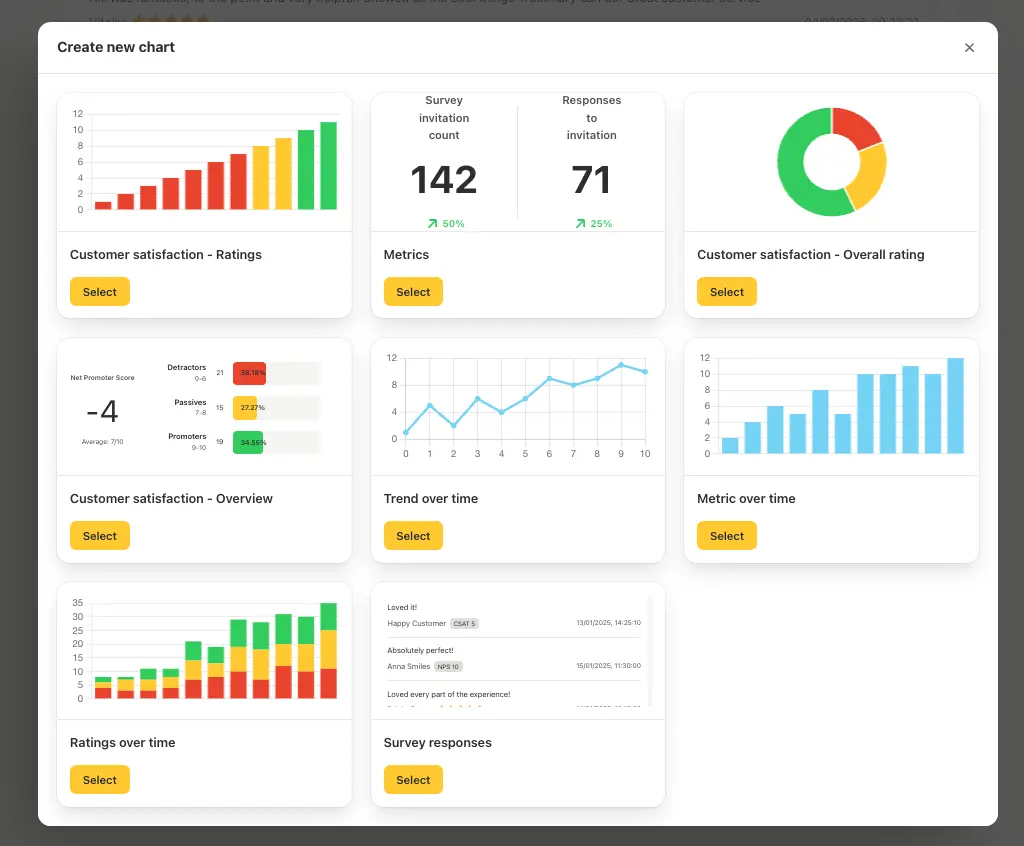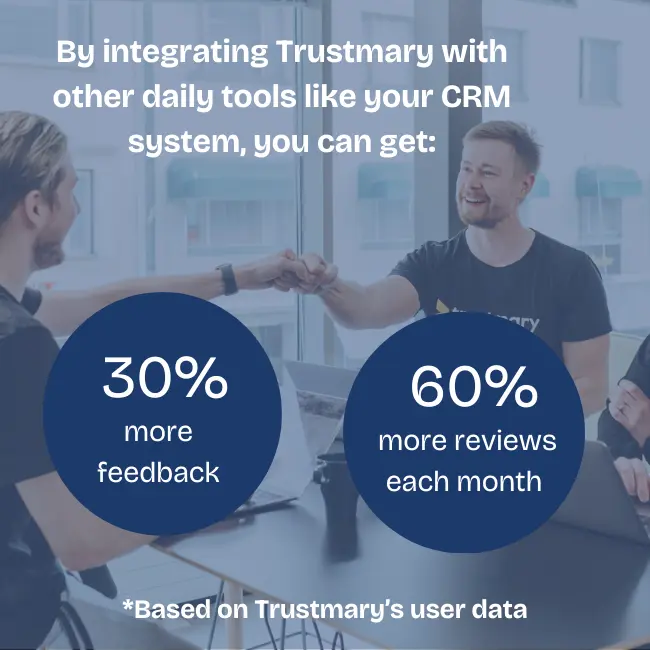What Is Customer Sentiment? + 7 Ways To Analyze It


Understanding customer sentiment has never been so important. It helps build a strong brand reputation that leads to a loyal customer base.
With 66% of consumers saying that a bad experience can ruin their day, this shows just how much impact a negative brand interaction can have.
As businesses work around the clock to provide products and services that leave their customers feeling great, customer sentiment data is invaluable. With insights that reveal whether customers are showing positive or negative sentiment across different channels, it’s easier than ever to uncover pain points and provide a lasting solution.
In this article, I will explain what customer sentiment is and how to prepare data for a customer sentiment analysis.
I’ll then go over seven different ways that sentiment data can be analyzed to help businesses find the approach that helps them grow with customer insights.
What is Customer Sentiment?
Customer sentiment is a metric that refers to the emotions a customer feels about a brand experience. It can be used to gain a deeper understanding of people’s feelings towards a product or service.
By being able to analyse large amounts of text data, including sources such as
- Third-party reviews
- Customer service interactions
- Survey responses, and
- Social media conversations
a business can gain valuable insights into customer sentiment. This can then be used to establish areas of strength and opportunities for improvement.
Customer sentiment is a crucial consideration for all modern businesses.
I've seen a few cases, where analyzing customer sentiment has led making significant changes to the whole digital customer experience, which leads to happier customers and less customer churn.
Can you afford not to understand your customers better?
Preparing Data For Customer Sentiment Analysis
To analyse customer sentiment, the data needs to be prepared.
Here are some of the steps that can be taken to get the data ready.
If you're only interested to know how to get a baseline for your sentiment scores and to improve customer sentiment, you should try a customer sentiment tool and not do these on your own.
Some sentiment analysis software enables you to import all the necessary data and will help you identify patterns within a few minutes of use. More about the tools and software later.
1. Define the scoring system
To maintain consistency when tracking customer sentiment, a numerical customer sentiment scoring system needs to be put in place.
Some businesses choose to stick to a simple scale that adds +1 for positive sentiments, -1 for negative sentiments, or 0 for neutral sentiments. If a more detailed analysis is preferred to include more specific emotions, a wider scale can be implemented with different scores for each category.
2. Identify sentiments
Whether manually reviewing text or using machine learning to analyze large quantities of text, rules need to be implemented to determine what is classified as a positive or negative sentiment.
Predetermining words or phrases that are commonly associated with each emotion will help to group each piece of text accurately.
For example, negative keywords may include “poor quality” or “disappointing”, whereas positive keywords would look more like “easy to use” and “great”.
3. Gather all data sources
To avoid skewing results, pulling together data from all platforms will ensure a comprehensive picture of customer sentiment is given.
Bring together
- Third-party online reviews from platforms such as Google and Facebook
- Social media conversations from active channels (including social media comments!)
- Customer service queries, tickets and discussions
- Any user-generated content, such as first-party reviews
- Customer feedback data
Monitoring all platforms will ensure that any trends across platforms can be established and any areas of concern can be worked on.
Using web scraping tools, such as Web Scraper, will make the process easier and prevent duplicate data.
4. Implement a reporting strategy
To avoid losing track of where all of the raw files came from, using a customer reporting strategy will ensure the data is well-kept and clearly structured.
Having a written record of the feedback left by customers, along with the response given by the customer service team, will make it easier to track the interactions and identify areas for improvement.
Does that Sound Too Complicated?
Only huge companies with huge budgets can start such a big project from scratch.
Smaller companies should try importing their customer feedback data and third-party reviews into Trustmary.
We'll help you keep track of customer sentiment and how it develops over time.
7 Ways To Analyse Customer Sentiment Data
After gathering customer sentiment data, choosing the best technique for analysing the data can make all the difference. Here are seven different methods which can be utilised:
1. Sentiment analysis
A sentiment analysis consists of categorising text into sentiments to monitor customer satisfaction.
By splitting all customer interactions into positive, negative, or neutral sentiments, it is easier than ever to track customer satisfaction and identify any peaks or dips.
There are various tools available to help carry out sentiment analysis, including Google Natural Language AI, which uses machine learning to analyse text and understand customer attitudes. This process is particularly effective when looking into large quantities of customer feedback over time.
2. Emotion detection
Emotion detection is a more detailed analysis technique that uses natural language processing to detect any emotional cues from text.
It means you're analyzing different feedback points to figure out what customers feel.
By being able to segment emotions, whether that be happiness, surprise, anger, or disappointment, a business is able to connect with its customers on a deeper level and adjust its marketing communications accordingly. This can then be used to get a deeper understanding of customer motivations and pain points.
To implement emotion detection, predefined words and phrases will need to be set to help identify the different emotions. Natural language processing models can be used to do this on a larger scale.
3. Aspect-based analysis
When it comes to product development, an aspect-based analysis can be carried out to break down customer opinions based on the nature of the feedback.
Once the different aspects have been defined, the analysis can be carried out to collate any feedback that fits into each category. Some examples of categories that might be used by a business include customer service, delivery, price, and quality.
This method is particularly useful when looking into the areas of the business that need improvement. It can also be used to break down feedback across different product categories – a powerful strategy when looking to create new products or adjust existing ones.
4. Intent analysis
An intent analysis is used to establish the reason for customer feedback, providing insight into the main topics that customers are discussing. Examples of intent would typically include complaints, inquiries, purchase intent, or compliments.
By having a clearer understanding of intent, the customer service team can be more prepared to address the feedback and identify any concerns.
This form of analysis is particularly insightful for websites that contain, or are looking to contain, a live chat function. By having more understanding of common queries and topics, the predefined answers can be tailored.

5. AI classification
Artificial intelligence (AI) can provide significant value when analysing customer sentiment data as vast amounts of data can be analysed in seconds.
Popular AI tools such as ChatGPT and Google Gemini are becoming more advanced at detecting human emotions. By analysing text, they are able to identify whether the customer feedback was written with emotions such as gratitude, disappointment, confusion, anger, or even sarcasm.
This strategy can be particularly effective when it comes to analysing large chunks of data or particularly long-form content, saving significant amounts of time in comparison to human analysis.
6. Topic modelling
Similarly to intent analysis, topic modelling can be used to identify key themes among customer feedback. However, instead of focusing on the discussion category, topic modelling looks for broader patterns without necessarily needing to know the exact intent.
This method provides the best results when looking to make strategic decisions, grouping together customer feedback that contains related words or phrases. This allows the business to see opinions on specific products without having to cypher through irrelevant text.
7. Multilingual analysis
For businesses that work on a global scale, different languages can make it difficult to carry out a regular analysis.
A multilingual customer sentiment analysis uses natural language processing models to group sentiments in different languages. By being able to interpret the sentiments after translation, feedback can be analysed on a broader scale to take the wider market into consideration.
It is also possible to break down the analysis by region, helping to understand any differences in pain points among different customer bases.
How Can Sentiment Analysis Be Used to Improve Customer Experience?
A customer sentiment analysis is a powerful strategy which helps achieve a better understanding of customer emotions and motivations. By grouping data based on positive, negative, and neutral sentiments, trends can be identified and action can be taken to improve the customer experience.
There are many ways businesses can improve their customer experience after doing sentiment analysis.
Checklist for Steps to Improve CX
- Identify an fix pain points instantly
- Prioritize product development based on emotions
- Automate review collection and highlight happy customes
- Track customer experience over time
- Segment customers by sentiment for tailored follow-ups
Okay that was a short checklist, but here are the points in more detail:
1. Identify and Fix Pain Points Instantly
Automatically flag negative feedback.
Connect this with your workflow to alert your customer service team or open a support ticket immediately—before a minor frustration turns into churn.
2. Prioritize Product Development Based on Emotions
Instead of guessing which features to build or fix, analyze sentiment trends in your feedback. If a specific feature constantly shows up with frustrated tones, it’s a signal to act.
Let real emotions guide your roadmap and product development.
3. Automate Review Collection and Highlight Happy Customers
Positive sentiments?
Use automation to ask those customers for public reviews or testimonials. Trustmary's 3-in-1 feedback forms make sure you ask for feedback and testimonials at the same time.
With Trustmary, you can also publish the best testimonials directly to your website with just a few clicks—no manual work needed.
4. Track Customer Experience Over Time
Don’t rely on occasional surveys. Use ongoing sentiment analysis to measure emotional shifts in customer feedback.
This lets you act before CSAT scores drop or NPS average takes a permanent hit.
5. Segment Customers by Sentiment for Tailored Follow-Ups
Not every customer should get the same message.
Segment feedback by sentiment and follow up accordingly—apologies and fixes for negative feedback, upsells or referral asks for positive feedback.
Remember to share all customer feedback internally automatically to make sure situations are handled promptly.
Make Sure You Collect Customer Feedback
Collating data across third-party review sites, social media platforms, feedback forms, and customer service interactions will mean all brand-related feedback can be continually monitored and addressed to manage brand image and resolve any negative feedback.
How are you currently collecting customer feedback as a part of your processes?
Set up automations to ensure you know exactly how customers feel at important touchpoints.
According to our research, if you integrate a tool as part of your daily tools, like CRM, you'll get 30% more feedback than relying on manual actions.

Customer Sentiment Analysis Tools
The best customer sentiment analysis tools allow you to:
- Analyze all customer feedback data
- Import online reviews from third-party sources
- Import support ticket data
It's interesting that sentiment analysis for reviews is typically seen as a separate part of the overall sentiment analysis.
With online reviews, the positive and negative sentiments can reveal very different things than what anonymous direct feedback tells you. People are different, and so are their ways of giving feedback.
When you know what customers want from you, you can start managing customer expectations effectively. If you manage to manage expectations, you'll start getting more satisfied customers.
This leads to increased customer loyalty, which leads to more repeat purchases.
Customer Sentiment Tools to Try
- Trustmary (Specialized in analyzing private open feedback, NPS data and third-party reviews)
- Sprout Social
- Hootsuite
FAQ
What is the best customer sentiment software?
The best customer sentiment analysis software is a tool you can use weekly to get actionable customer insights even from a large customer data set.
How can I do customer sentiment analysis?
- Collect open-ended feedback
- Use sentiment analysis tool
- Identify patterns in the data
- Act on the insights
The faster you react to customer emotions, the better your overall customer experience will be.
Who needs to do customer sentiment analysis?
Anyone who wants to understand their customers better and improve their experience. More specifically:
- Business Owners and CX Leaders (To track overall customer satisfaction, discover hidden problems, and boost retention.
- Customer Success and Support Teams (To spot frustrated customers early, respond faster, and prevent churn.)
- Marketing Teams (To discover what language resonates with customers, identify brand advocates, and find testimonial-worthy feedback)
- Product and UX Teams (To prioritize feature improvements based on real emotional reactions and recurring feedback patterns.)
- Sales Teams (To better understand customer objections, expectations, and motivations—straight from the source.)
What are the benefits of doing customer sentiment analysis?
- Spot problems early
- Become customer-centric
- Boost retention and loyalty
- Get testimonials and social proof
- Save time with automating the process
- Make smarter business decisions
Is customer sentiment important?
Yes—customer sentiment is crucial if you want to build trust, loyalty, and long-term growth.